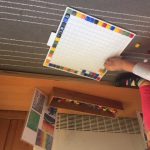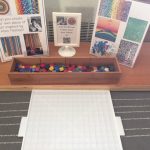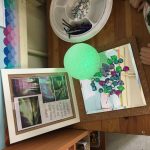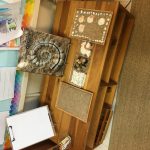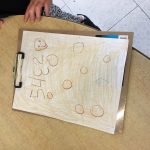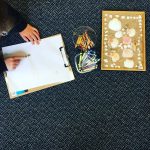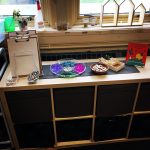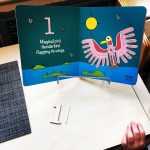“The wider the range of possibility we offer children, the more intense will be their motivations and the richer their experiences.”
– Loris Malaguzzi
As educators, we recognize the power of open-ended materials and their potential for creativity, imagination, problem-solving and critical thinking. We have a responsibility to provide our students with rich learning experiences, and this includes providing materials that have multiple uses and possibilities. We have both in classrooms that are outfitted with more traditional and closed-ended materials. We are committed to transforming our classrooms and ensuring our programs encourage 21st century skills and competencies; we believe that the incorporation of loose parts into various areas in our classroom, as well as creating a loose parts area, will benefit our students tremendously.
Team Members
Adrienne Plumley
Toronto District School Board
Shauna Husbands
Toronto District School Board
Professional Learning Goals
- Investigated how we as educators could enhance our students learning through loose parts
- Explored how loose parts can be used as tools for collaboration, communication, problem-solving, global citizenship, innovation and critical thinking
- Learned more about designing and implementing provocations and invitations for learning using loose parts
- Increased our capacity for noticing and naming the learning
- Further developed our capacity for integrating literacy and numeracy into the provocations and invitations
- Became more reflective on how we introduced the loose parts to the students
- Engaged children in the documentation of their own learning
Activities and Resources
Met over two full release days, one full weekend day, and two half release days over the course of the project to:
- discuss loose parts theory,
- purchase resources,
- discuss project progress,
- begin developing a resource to share with colleagues (We are working on the final edits and hope to upload this soon!),
- co-plan provocations and invitations for learning,
- use technology (Google Keep, iPads, etc.) to document,
- share new ideas and reflections on an ongoing basis, and
- collaborate to incorporate literacy and numeracy into the loose parts
Unexpected Challenges
- Not all provocations and invitations were successful – students showed a strong preference for some provocations and invitations for learning over others
- Our students were very accustomed to traditional learning environments and materials. Acclimating to a more Reggio-inspired environment (including the loose parts) took time.
- Materials we thought would be popular with the students haven’t been
- Lack of space within the class for storing, displaying and using the materials
- Difficulty finding out the accurate rate of occasional teacher coverage
- Difficulty communicating aspects of the project with administrators
- Educators at our respective schools weren’t interested in collaborating with us (with a couple of exceptions)
Enhancing Student Learning and Development
This project provided the students with opportunities to explore materials they wouldn’t normally have access to. It showed the children that materials can be used in a variety of ways for a variety of purposes. Planning thoughtful provocations and invitations for learning that connected to the curriculum supported their development of 21st century skills and competencies. This allowed the children to be imaginative and explore the resources in an open-ended way.
Provocation: A variety of loose parts are provided with minimal (or no) direction.
Invitation for Learning: A variety of loose parts are provided in conjunction with a challenge, picture book or visuals to provoke thinking and inspiration.
Sharing
To share the results of our project with colleagues we have offered or will be offering:
- Lunch-and-Learns
- A resource developed by us with examples of our provocations and invitations using the loose parts
- Sharing through social media (Twitter and Instagram)
- As an ongoing professional inquiry, we will continue to extend and share our learning with others, including teachers, DECEs, before and after care staff, childcare staff, etc.
Project Evaluation
We feel that our project was a success and that we met our professional learning goals.
Our success was based on our growth and the growth of the students. One major area of growth for us as educators using loose parts has been our ability to be more thoughtful about introducing the materials to the students. Giving them more time to explore and talk about the materials before setting up provocations with those materials has had a positive effect on their use of them.
As part of our professional development, we attended a two-day kindergarten conference in April which was run by the Elementary Teachers Federation of Ontario. At this conference, we attended a variety of workshops, including one centered on loose parts. As a result of that workshop, we decided that we would follow a specific process before introducing our provocations and invitations for learning:
- We had children observe the the loose parts and describe the things that they noticed
- We encouraged the children to think about what they might do with the loose parts
- We invited students to explore the materials and share their reflections with the group
- Children engaged with provocations and invitations for learning using materials that had been previously introduced
- Children documented their learning with technology, through drawing/writing, and orally. Then they shared their documentation with the whole class, and then worked together to notice and name their thinking and learning.
Once we had progressed to that practice, we began to move into setting up provocations with the children by asking them which materials they would need to respond to specific challenges. This in turn provided them with more ownership of the materials and their classroom spaces. It also worked towards promoting the 21st century competencies, especially critical thinking.
We wish we had started with this process. We feel that if we had, the students would be further along in their understanding of the power of loose parts for problem-solving, critical thinking, collaboration and communication.
One thing we would have liked to do differently is have loose parts throughout the room. We underestimated how much space/shelving would be needed to do that. We are both transferring to new schools and are looking forward to seeing how we may be able to do this in our new classrooms.
Resources Used
A Collaboration with Nature by Andy Goldsworthy
Loose Parts: Inspiring Play in Young Children by Lisa Daly and Miriam Beloglovsky
Loose Parts 3: Inspiring Culturally Sustainable Environments by Lisa Daly and Miriam Beloglovsky
Resources Created
These resources will open in your browser in a new tab, or be downloaded to your computer.


